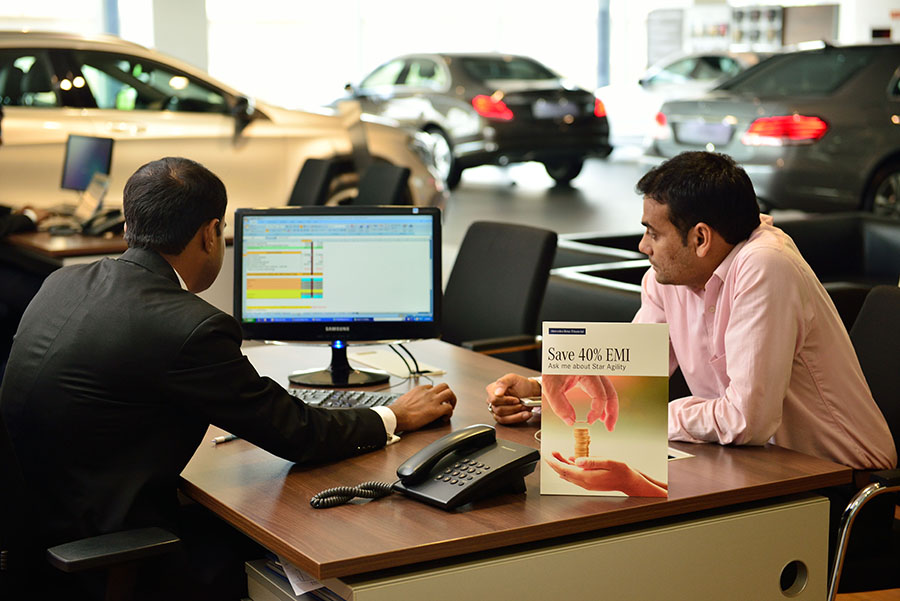
How Digital is set to disrupt the Indian automobile market
70% of Indian auto sales will be digitally influenced by 2020, says Bain-Facebook survey; young customers to drive change; OEMs far behind in keeping pace
 Image: Pradeep Gaur/Mint via Getty Images (For illustrative purposes only)
Image: Pradeep Gaur/Mint via Getty Images (For illustrative purposes only) If there was more evidence required of how digital is disrupting every sphere of the economy, here’s further proof. A Bain & Company and Facebook survey of the Indian auto sector has predicted that as much as 70 percent of Indian auto sales will be digitally influenced by the year 2020. This is a 2.3x increase from the present $18 billion now, and will stand at 19 million units generating $40 billion. The survey has found that original equipment makers (OEMs) lag in adjusting their investment mix for this change.
OEMs need to think of themselves as mobility providers in the new age, rather than vehicle makers, and focus on those segments which will remain more relevant to the new auto consumer, with app-based ride aggregation also set to grow sharply in India in the coming days.
The fight for the consumer will be mainly fought by way of social media and search, with each influencing about 40 percent of sales (11 million units generating $23 billion in revenue), up sharply from 20 percent (4 million units and $7 billion in revenue) currently.
The Bain-Facebook survey was drawn up taking into account responses of 1,551 Indian customers who had purchased a vehicle in the past 12 months. This was supplemented with a survey of 87 dealers and conversations with top managements at various automobile companies. References were also taken from Bain’s Global Automotive Consumer Survey, which included respondents from the US, UK, Germany, China and India.
Mobile, the Bain-Facebook survey says, will dominate the device mix. Already 80 percent of online research on auto purchases is conducted on mobile devices and this is expected to increase even further. High digital influence is shaping brand consideration, and this trend is expected to grow further – as much as 60 percent of consumers will be influenced digitally, up from 45 percent now. Not surprisingly, then, the survey also says that young consumers are already driving this change. 49 percent of consumers under 35 say that digital already influences their decision making, compared with 40 percent of those over 35. As this cohort ages and a new cohort of younger people enter the market, digital will be an even greater influencer.
An important takeaway from the survey also is the evolving role of the dealer. This is particularly true of four-wheeler buyers. Almost 50 percent of buyers have already made a decision on both brand and model even before visiting the dealer. OEMs are also behind the curve on digital, with only 10-11 percent of their marketing budgets having been invested on digital. The OEM players will, therefore, need to up their game on digital to keep up with the change.
The Ola-Uber challenge, the new-age OEM
Over 40 percent of lead consumers, the survey finds, already use app-based taxi services over three to four times a week. There’s even more headroom for growth, in terms of annual rides per capita, with India clocking just 3.3 compared to 17.1 in China. This will pose a further challenge for OEMs.
The survey suggests some key imperatives for OEMs. They need to follow the profit and evolve business models to tap into shifting profit pools. Following the customer is another key imperative, where they will need to radically change the investment mix to move online with them as the customer embraces digital aggressively.
The dealers will also have to ensure they set up “dealerships of the future” and work on differentiation of the retail format. Dealerships, therefore, must be converted into brand experience centres where innovative virtual-physical layouts can give the customer an experiential feel of the product.
Digital options need to also be used better to ensure ongoing relationship with the customer, rather than a one-time engagement. Smart maintenance and pay-per-use insurance can be developed as options in the new age marketplace.
Building data and analytics capabilities is also essential for OEM players so that data can be sourced from multiple sources to build the right analytics solutions. Investing in the backbone will become crucial to ensure better customer satisfaction in the digital age.
Post Your Comment















